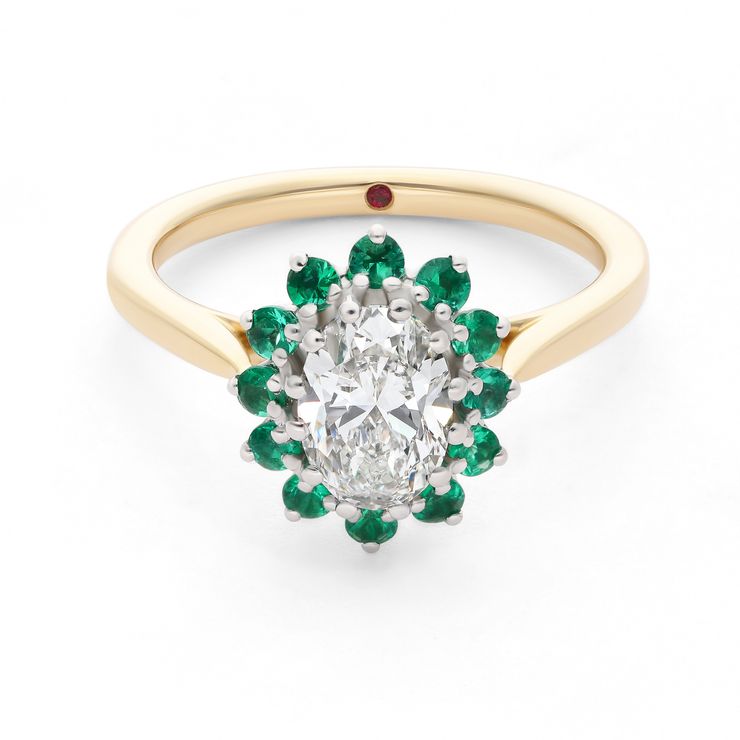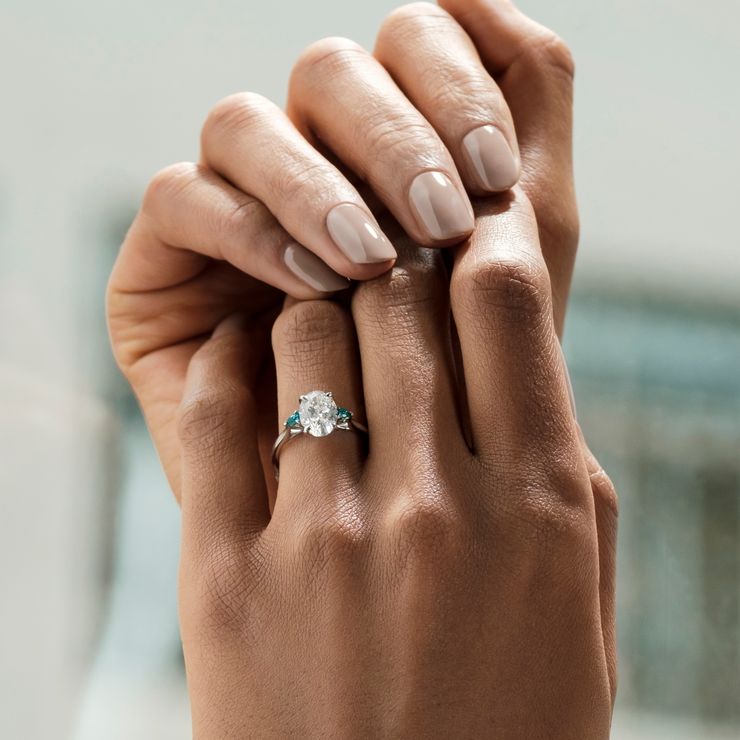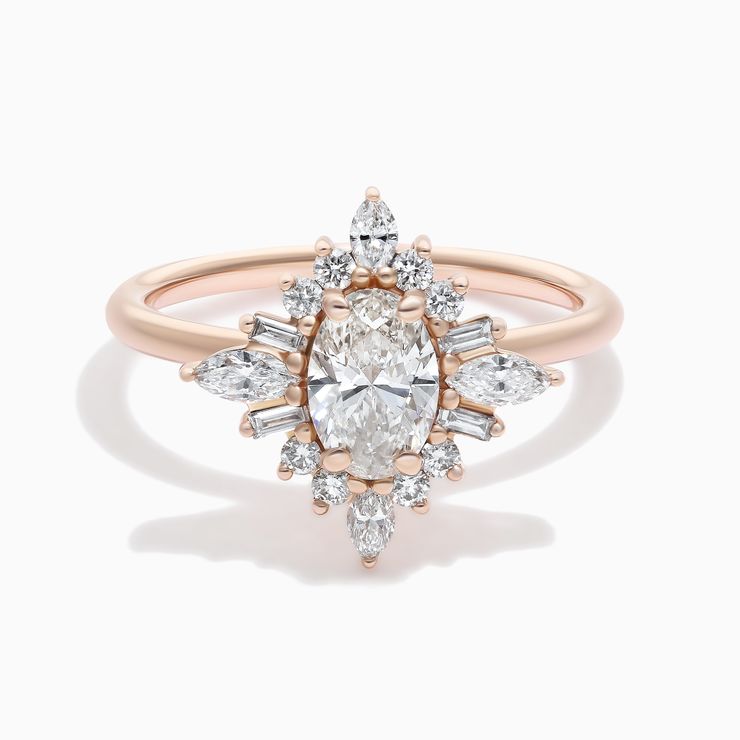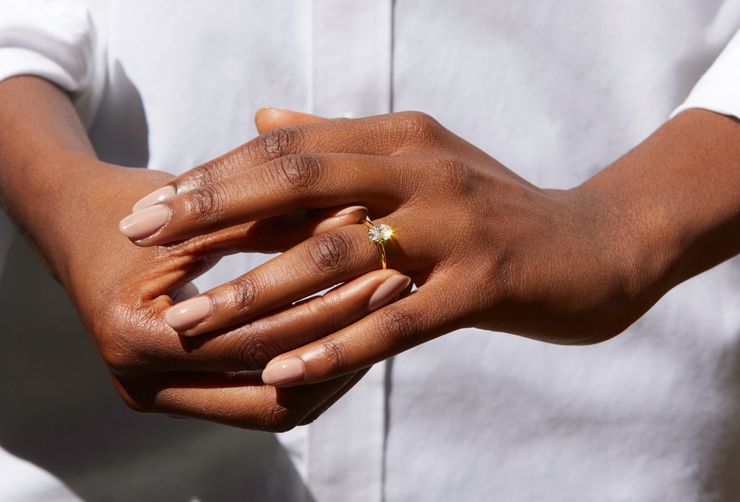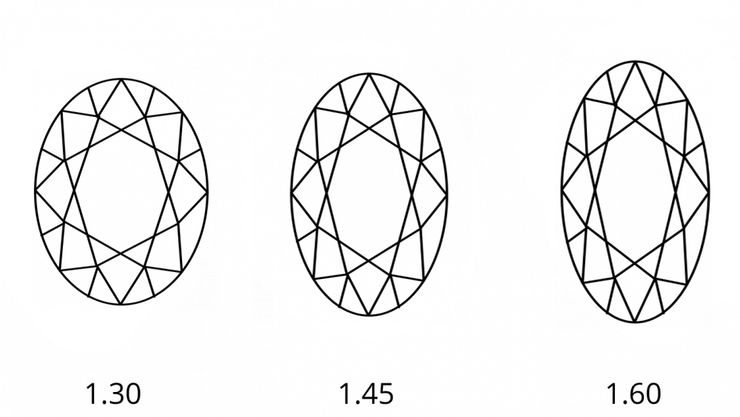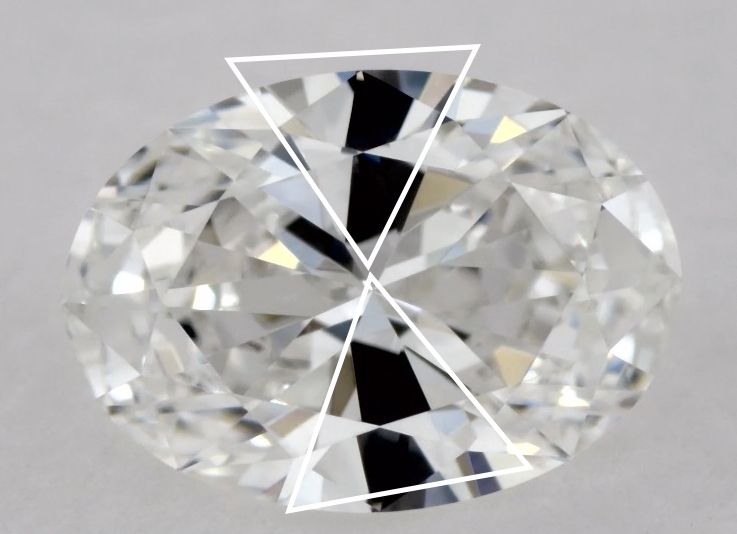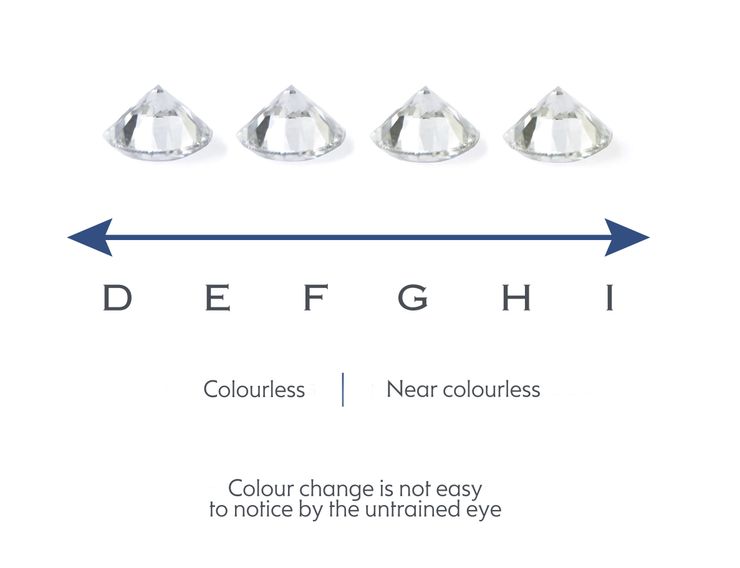As their name suggests, oval diamonds are symmetrical, elongated rounded shapes which possess a similar level of fire and brilliance to that of a round diamond. They are a modified brilliant cut, which means they share the same faceting pattern as round brilliant diamonds. The oval cut combines the timeless elegance of a round diamond with the elongated silhouette, creating a unique and versatile shape.
Oval cut diamonds typically have 58 facets, including a large flat table on top and a pointed culet at the bottom. The curved sides of the diamond give it an elongated appearance, with rounded ends that can vary in their degree of elongation. The length-to-width ratio of oval cut diamonds can vary, allowing for customization based on personal preference.
